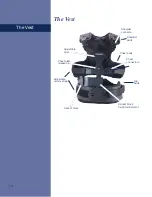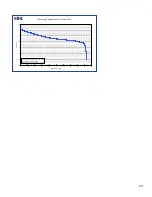
22
Basic Operating
Hand grips
The two-handed technique was invented
by Garrett Brown while working on
The
Shining
, and it has been the preferred
method of operating ever since.
Basically, the right hand does the work
of positioning the sled in space (moving
horizontally and vertically relative to the
body), and the left hand aims the sled
(and therefore the camera) by panning
and tilting.
If the Flyer-LE is properly balanced,
very little force will be needed to aim
the camera. Clenching the center post
or gimbal hard will counteract the
Steadicam’s “float.” Light control is
the key to a steady camera and smooth
moves.
The left hand also has the interesting job
of keeping the sled level as we move
about. As we accelerate or decelerate,
go around corners, etc., the left hand
must prevent the sled from going off-
level before it happens. One of the big
Steadicam operating skills is anticipating
how the sled will behave as we move
along. There are several classic “grips”
we use to aim and control the sled.
Finding your grip
• Grab the center post with your left
hand just below the gimbal. All
five fingers should be LIGHTLY in
contact with the post, but this isn’t
a tea party. Don’t just use your
fingertips – wrap you fingers a bit
around the post.
• The right hand fine tunes the
position of the Steadicam,
moving it side-to-side or closer
to or farther from your body, and
booms the arm up and down. It
also has the job of eliminating
the bounce of the springs – i.e.,
preventing unwanted up and down
movements as you move along.
• Grab the gimbal handle with your
right hand.
• Make sure that this hand does not
cross the bearing and touch any
part of the Y-shaped yoke, as this
will influence the aiming of the
sled.
The preferred grip, using the pinkie
finger to prevent a pendulum effect.
Full hand grip. All fingers surround the
post with a light touch.














































